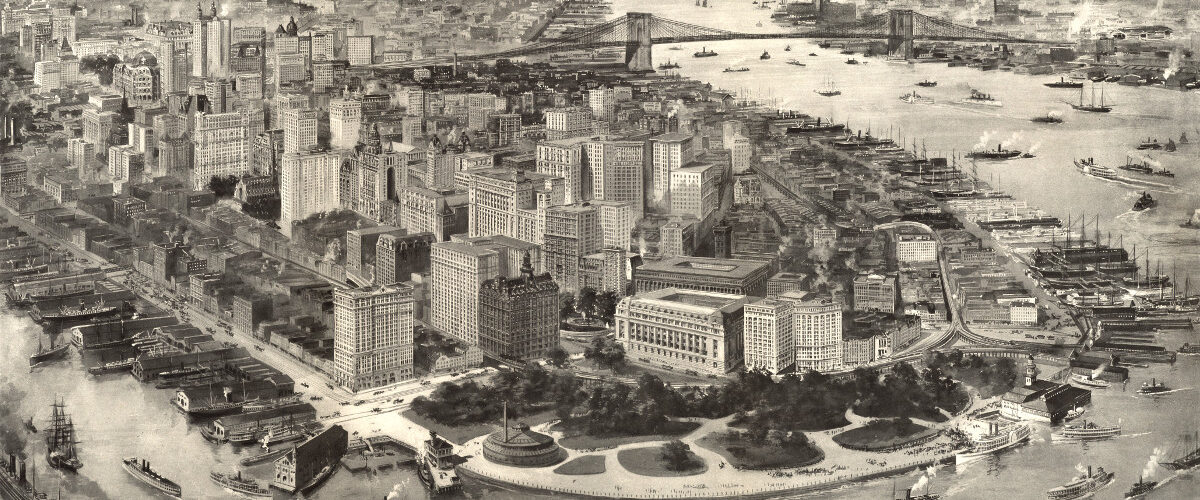The New York City in 1903

The history of New York City is a rich tapestry that spans centuries, from its early days as a Dutch trading post to becoming one of the most influential and iconic cities in the world. Here’s a brief overview of the history of New York City:
1. Native American Settlements:
Before the arrival of European settlers, the area now known as New York City was inhabited by various Native American tribes, including the Lenape people. They lived in the region for centuries, relying on the abundant natural resources provided by the Hudson River and surrounding areas.
2. Dutch Colonial Period:
In the early 17th century, Dutch explorers, led by Henry Hudson, arrived in the area. The Dutch West India Company established the colony of New Netherland, with New Amsterdam founded on the southern tip of Manhattan Island in 1624. The settlement quickly became a hub for trade and commerce.
3. English Colonial Period:
In 1664, the English seized control of New Amsterdam and renamed it New York in honor of the Duke of York. The city grew in importance as a major trading center, and its diverse population included English, Dutch, and other European settlers.
4. American Revolution:
During the American Revolution, New York City was a strategic battleground. It served as the British military and political base of operations until 1783 when it was evacuated by the British following the Treaty of Paris.
5. 19th Century Growth:
The 19th century saw significant population growth and industrialization. The completion of the Erie Canal in 1825 connected the city to the Great Lakes, facilitating trade and making New York a primary port. The arrival of millions of immigrants, particularly in the mid-1800s, contributed to the city’s cultural diversity.
6. Civil War and Gilded Age:
During the Civil War, New York City played a crucial role in supporting the Union cause. The late 19th century, known as the Gilded Age, brought economic prosperity and the construction of iconic structures such as the Brooklyn Bridge.
7. Early 20th Century:
The early 20th century saw continued growth, urban development, and cultural achievements. The city became a center of innovation, art, and industry. The completion of the New York City subway system in 1904 revolutionized transportation.
8. Great Depression and World War II:
The city, like the rest of the country, faced economic challenges during the Great Depression. World War II brought industrial mobilization and economic recovery to the city.
9. Post-War Era and Urban Renewal:
The post-war era brought both prosperity and challenges. Urban renewal projects in the mid-20th century led to the construction of modern skyscrapers and the redevelopment of neighborhoods, but also faced criticism for displacing communities.
10. Contemporary New York:
In recent decades, New York City has maintained its status as a global economic and cultural powerhouse. It has faced challenges such as economic downturns, social issues, and the impact of events like the September 11, 2001 terrorist attacks.
New York City’s history is marked by its resilience, diversity, and continuous evolution, making it a city with a rich and dynamic narrative that continues to unfold.








